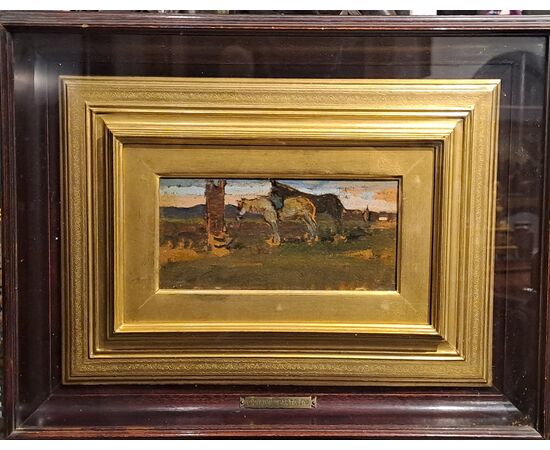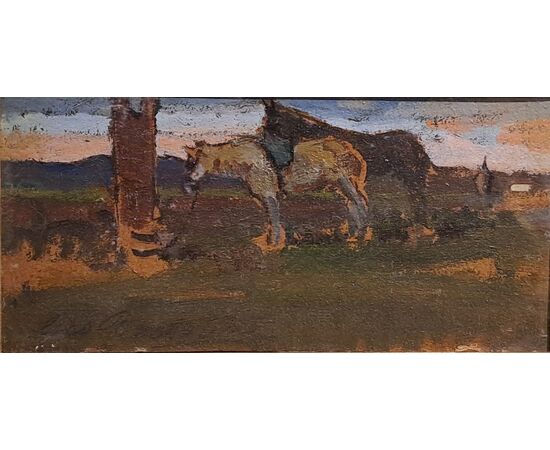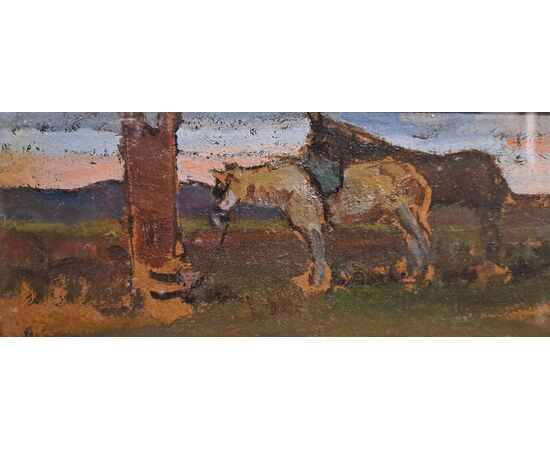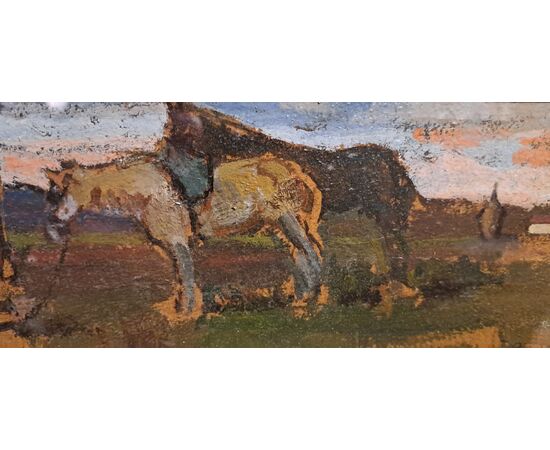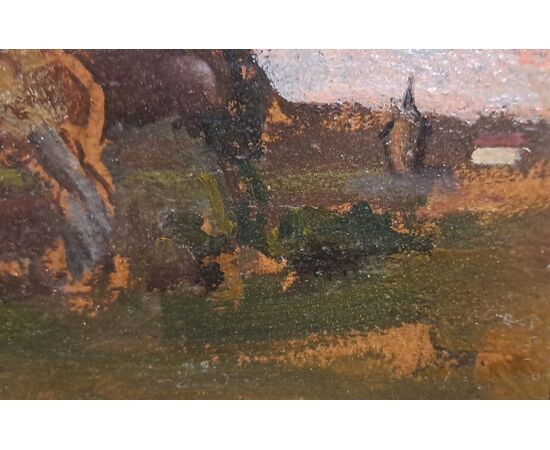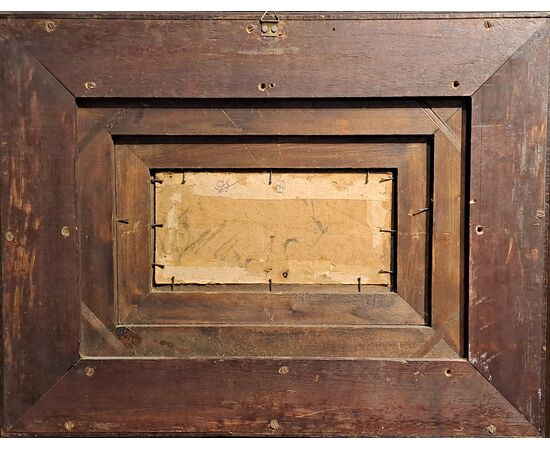HORSES IN LANDSCAPE - OIL ON PANEL - GIOVANNI BARTOLENA (Livorno 1866 – 1942)
Painting by Giovanni Bartolena
Title: Horses in the Landscape Artist: Giovanni Bartolena (Livorno 1866 – 1942) Technique: Oil on cardboard Period: First half of the 20th century
Description of the Artwork
A suggestive and vibrant work attributable to the famous painter from Livorno, Giovanni Bartolena, a post-Macchiaioli artist of great spontaneity and chromatic strength.
The painting captures a moment of quiet in nature, with two horses placed at the centre of the composition, rendered with rapid brushstrokes full of colour which enhance their musculature and earthly presence. The equine figures, Bartolena's favourite subject, are set in a rural landscape which evokes the light and intense colours of the Tuscan Maremma, in line with the Macchiaioli tradition that the artist reinterpreted with a more naïve and personal vision.
The palette is warm and luminous, characterised by earthy tones in the foreground (dark greens, browns) which contrast with the intense orange and soft pink of the sky at sunset or dawn. The use of colour is the real protagonist: direct, dense and pasty, applied directly to the surface, giving the work a remarkable emotional energy and a sense of solid immediacy. Architectural elements can be seen in the background, including a bell tower or a rural building, which anchor the scene to the Tuscan reality.
Dimensions: 50 x 39 cm with frame, 21 x 10 cm the painting
Biographical Notes: Giovanni Bartolena (Livorno 1866 – 1942)
Giovanni Bartolena was a leading figure in the painting scene in Livorno and Tuscany between the 19th and 20th centuries.
Formation: Nephew of the painter Cesare Bartolena, he trained at the Academy of Fine Arts in Florence where he was a pupil of the great master Giovanni Fattori, initially absorbing the Macchiaioli influence.
Style: Starting from the lesson of the Macchiaioli (in particular for the love of landscape subjects, the Maremma and horses), Bartolena developed a unique style, characterised by a bold and spontaneous use of colour, often intense and bright, which some critics have compared, for its expressive strength, to European movements such as the Fauves or painters such as Van Gogh.
Subjects: His favourite subjects included still lifes, vases of flowers, views of Livorno and, in particular, scenes of rural life with horses and figures.
Recognition: Despite a life that was often difficult and lonely, he only obtained significant critical acclaim in old age, particularly after a solo exhibition in Milan in 1927. His works are now sought after by collectors who appreciate his directness and powerful chromatic rendering.

